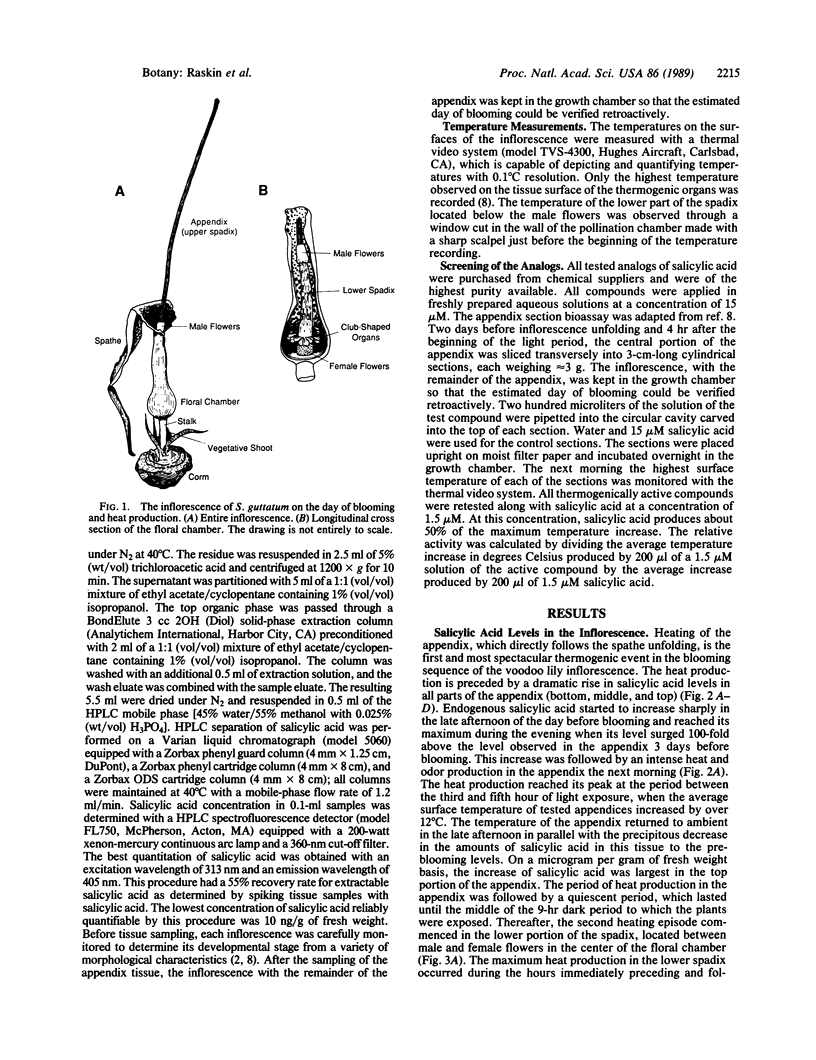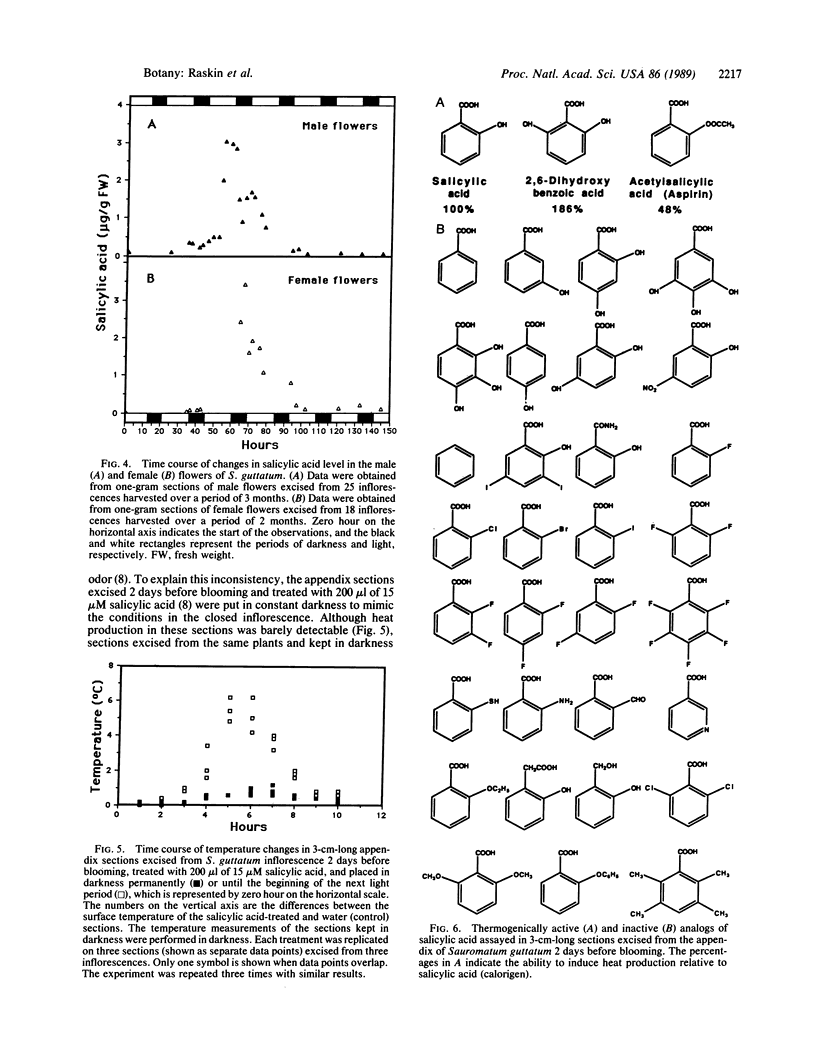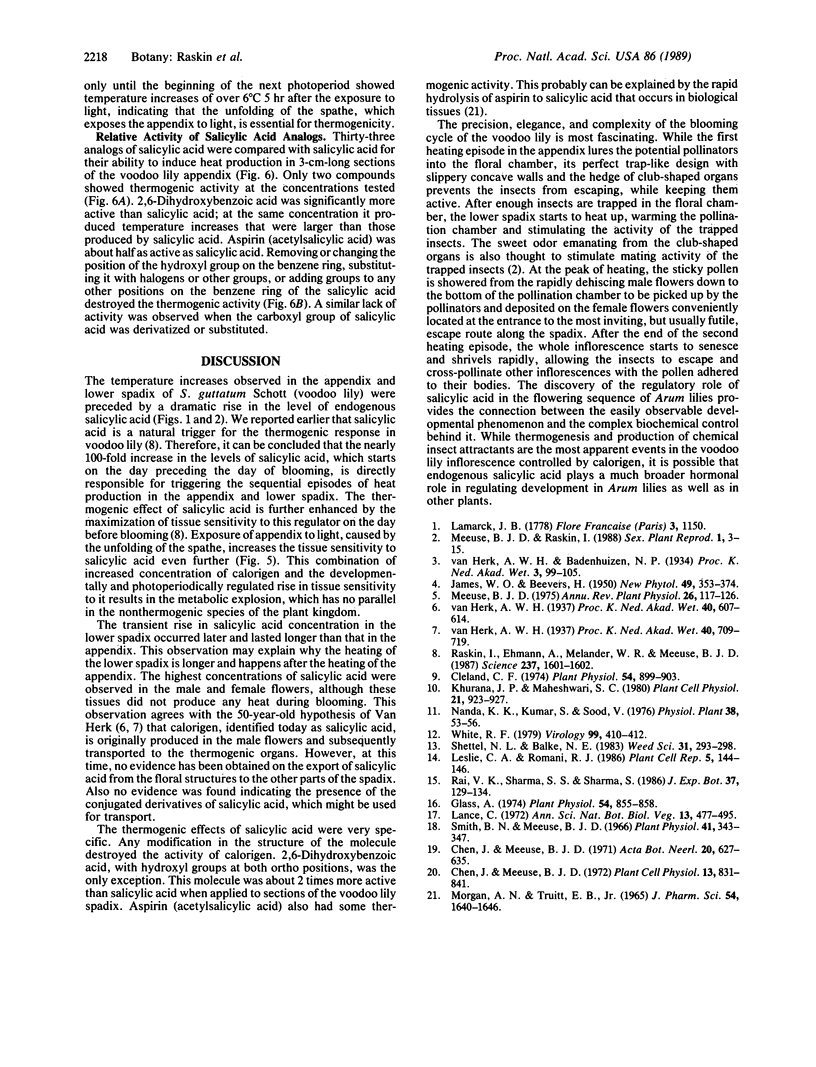Abstract
We have recently purified calorigen, the natural trigger for heat production in the inflorescences of Sauromatum guttatum Schott (voodoo lily), a thermogenic plant, and identified it as salicylic acid. Since then an analytical assay was developed that allows the quantitation of salicylic acid in plant tissues. This assay was used to demonstrate that on the day preceding the day of blooming the levels of salicylic acid in the thermogenic organs (appendix and lower spadix) of the voodoo lily increased almost 100-fold, reaching a level of 1 μg/g of fresh weight. The level of salicylic acid in the appendix started to rise in the afternoon and reached its maximum in the late evening, whereas the maximum accumulation of salicylic acid in the lower spadix occurred late at night. The increase in salicylic acid level in the appendix was followed the next morning by a spectacular metabolic burst that lasted for about 7 hr and at its peak increased the appendix temperature by over 12°C. The second, 14-hr-long, thermogenic episode in the lower spadix started late at night and ended on the following morning, after maximum temperature increases of more than 10°C. The concentration of salicylic acid in both thermogenic tissues promptly returned to basal, preblooming levels at the end of the thermogenic periods. The thermogenic response was under strong photoperiodic and developmental control, with salicylic acid eliciting much stronger thermogenic responses in light than in darkness. Similar surges in salicylic acid occurred in nonthermogenic male and female flowers, while the concentration of salicylic acid in the spathe remained consistently below 20 ng/g of fresh weight. Of 33 analogs of salicylic acid tested, only 2,6-dihydroxybenzoic acid and acetylsalicylic acid (aspirin) were thermogenic. The activity of 2,6-dihydroxybenzoic acid exceeded that of salicylic acid.
Keywords: Sauromatum guttatum, thermogenic plants, flowering, plant growth regulation, cyanide-insensitive respiration
Full text
PDF




Selected References
These references are in PubMed. This may not be the complete list of references from this article.
- Cleland C. F. Isolation of Flower-inducing and Flower-inhibitory Factors from Aphid Honeydew. Plant Physiol. 1974 Dec;54(6):899–903. doi: 10.1104/pp.54.6.899. [DOI] [PMC free article] [PubMed] [Google Scholar]
- Glass A. D. Influence of Phenolic Acids on Ion Uptake: IV. Depolarization of Membrane Potentials. Plant Physiol. 1974 Dec;54(6):855–858. doi: 10.1104/pp.54.6.855. [DOI] [PMC free article] [PubMed] [Google Scholar]
- Raskin I., Ehmann A., Melander W. R., Meeuse B. J. Salicylic Acid: a natural inducer of heat production in arum lilies. Science. 1987 Sep 25;237(4822):1601–1602. doi: 10.1126/science.237.4822.1601. [DOI] [PubMed] [Google Scholar]
- Smith B. N., Meeuse B. J. Production of volatile amines and skatole at anthesis in some arum lily species. Plant Physiol. 1966 Feb;41(2):343–347. doi: 10.1104/pp.41.2.343. [DOI] [PMC free article] [PubMed] [Google Scholar]


